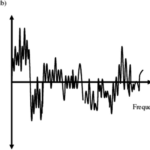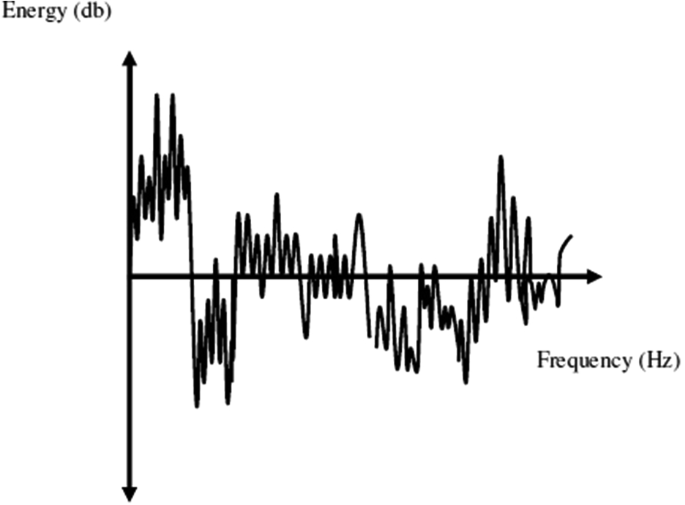Music has the power to capture and move our emotions in a way that nothing else can. It’s amazing how carefully constructed sounds and melodies can bring out a range of human emotions from joy, sorrow, hope, and anger. But the key to unlocking its full potential lies in the audio content. Poorly mixed music can sound muddy and lackluster, but with the right audio enhancements services, you can take your music to the next level. In this blog post, we’ll look at how you can make the most of your audio content with these top audio enhancement services. So let’s get started and find out how these services can help you give your music the perfect finishing touch.
Quick Summary
There are various audio cleaning services available such as noise reduction, equalization, reverb and dynamic range compression. Professional studios may also offer sound mastering and mixing services for the ultimate audio experience.
Types of Audio Enhancement Services

Audio enhancement services are popular among music producers and audio engineers, who use them to maximize the potential of their musical recordings. This can range from improving the quality of a simple home recording to ensuring that the sound of a polished, professional production is ready for distribution. Depending on your needs, there are several types of audio enhancement services available to help you unlock the potential of your music.
First, there’s mastering, which is the process of taking a finished mix and manipulating it to optimize sonic qualities and make sure it has a consistent sound across all playback systems. Re-EQing is a type of mastering that specifically targets equalization (EQ) techniques to adjust frequency balance. Compression and peak limiting are also used by mastering engineers to improve overall dynamic range and more accurately reflect how the track will play on various listening devices. Finally, submixing allows you to reduce individual elements in a mix while maintaining overall balance and clarity.
Another audio enhancement service is noise removal. Using software to reduce background noise makes recordings clearer and more intelligible. This can be especially useful for recordings in challenging environments or locations with loud ambient noises like construction sites or busy city streets. Stereo imaging uses filters to make adjustments between left and right channels, creating a more vivid stereo image for listeners. Specialized spectral shaping involves analyzing specific aspects of sound frequencies through power spectrums or spectral analysis graph in an effort to further refine the end result.
Overall, there are a variety of audio enhancement services available for anyone looking to take their music recordings up another level. While some may require specialized software or hardware, following basic guidelines can help ensure that your final product contains everything needed for optimal listening experiences across different mediums. With this knowledge, you can efficiently identify which services best match your artistic vision and budget limitations.
Now that we have discussed types of audio enhancement services, let’s look at recording and studio production in the next section.
- According to a study conducted in 2017, vocal enhancers and de-essers are considered the most important services in an audio enhancement.
- Audio enhancement services can be used to improve sound quality and change the frequency or tone of the sound accordingly.
- A market research study estimated that the global audio enhancement services market was valued at over $3 billion in 2019, and is expected to reach a value of over $5 billion by 2027.
Most Important Points
Audio enhancement services are available to help producers and audio engineers maximize the potential of their musical recordings. Examples of audio enhancement services include mastering, re-EQing, compression, peak limiting, submixing, noise removal, stereo imaging, and specialized spectral shaping. It is important to understand which services best match one’s artistic vision and budget limitations to ensure the recording has everything needed for optimal listening experiences across different mediums.
Recording and Studio Production

Recording and studio production are essential components of audio enhancement services. Not only do they contribute to improved sound quality and clarity, but they also ensure that the music’s message is captured effectively. Recording and studio production services can include anything from basic recording through to multilayered production involving complex layouts and collaboration with multiple musicians.
Studio production is a vital part of the process, as it involves the manipulation of soundwaves with various techniques to create an even better sounding product. Working with an experienced engineer is essential in this process, as they can help you capture the true essence of your sound while still ensuring its accuracy. Techniques such as compression and eqing can be used to clean up background noise or level off frequencies for a more balanced mix. Additionally, effects like reverb or delay can be used to add further depth and dimension to your music.
On the other hand, many people argue that studio production does not always lead to an improved track, claiming that overworking a song can strip away its natural authenticity and character. Furthermore, hiring an engineer requires financial investment of both time and money which not everyone has access to.
Regardless of whether it leads to an improved track, recording and studio production are an important step in creating music and should be taken into consideration for any artist looking to unlock their music’s potential. By investing in audio enhancement services such as these, artists can have more control over their recordings while still being able to maintain sonic consistency throughout their project. The next section will discuss post-production services which further enhance the recordings with strategies such as mastering, mixing, and remixing.
Post-Production Services
Post-production audio services offer an artist more control over the tone and quality of their music. Through post-production, an artist can refine their music to achieve a certain sonic ambience or result. When it comes to post-production services, there are two main categories: tuning and mastering.
Tuning involves adjusting individual elements such as drums, bass, vocals, strings, keyboards and horns to create a balanced track that sounds polished. On the other hand, mastering is the process of combining all the individual tracks in order to create a final product that is ready for release. Mastering also allows for minor adjustments in order to ensure a coherent and cohesive sound across the entire album or song.
The debate surrounding post-production centers on whether it detracts from the natural sounds of the performance itself. Some argue that modern technology has given rise to too much overcooked production where every slight nuance is adjusted for maximum manipulation at the expense of sincerity. Others argue that it enables an artist to take control of their own sound and can bring out hidden potential from otherwise unremarkable performances.
No matter what side of the debate one falls on, it cannot be denied that post-production services offer artists valuable tools in crafting their final product directly to how they want it to sound. With these tools at their disposal, artists have great freedom in developing a unique sonic signature which can help make them truly stand out amongst the competition.
The next section will explore some of the various benefits associated with using audio enhancement services such as post-production tuning and mastering.
Benefits of Audio Enhancement Services
Audio enhancement services provide numerous benefits to both commercial and personal music projects. In the world of sound engineering, audio enhancement can often mean the difference between a low-budget production and a professional one. Enhancing audio can help improve an overall project’s sound quality, offer more clarity and depth to a finished product, as well as increase articulation and presence in a mix.
The greatest benefit of audio enhancement is that it allows musicians and producers to shape their sound and create distinct tones, textures, and depth within a track. By carefully blending chunks of audio into a cohesive mix and working with the dynamics of a track, custom sounds can be developed that can help bring any project to life. Through audio enhancement, a sense of balance can often be achieved in the low-end frequencies, which is especially illuminating for large-scale projects like film scores or ad campaigns.
On the flip side, there are potential drawbacks to audio enhancement services as well. Enhancing audio for creative purposes requires a specific skillset that many producers or engineers may not possess. Therefore, it’s not uncommon for studios or production companies to outsource certain sound post-production activities such as editing dialogue and adding effects to improve the overall quality of the track. As much of this process needs to be done manually using various software programs and techniques, depending on the engineer’s experience level, these types of activities can often cost more than anticipated if they are not done properly.
Overall, while there are some potential downsides to using audio enhancement services, its benefits far outweigh the risks when it comes to producing high-quality soundtracks or music projects. To ensure optimal results on every project, proper planning ahead of time is key making sure budgets accommodate additional costs if necessary – including hiring skilled technicians experienced in audio enhancement services – so that any final output meets professional standards.
The next section will discuss how audio enhancement services improve sound quality for both professionals and amateurs alike.
Improved Sound Quality
Sound quality is an important aspect of the music listening experience, and enhancing the sound quality of music can make a huge difference in how it is perceived by listeners. For producers, too, improving the sound quality of their tracks not only ensures a better listening experience for fans, but also adds a level of professionalism to their composition. Audio enhancement services offer ways to improve sound quality in various ways.
For digital recordings, improvements to the sound can be achieved through dynamic processes such as compression and EQ adjustments. Compression reduces loudness variations between different sounds and creates more of an even balance between them in order to bring them more attention in the mix. It also helps to add punch and clarity that brings out key elements in your music. By applying an EQ (equalizer) to certain frequencies, audio engineers can reduce harshness, boost low-end or high-end frequencies to give it more power in its environment, achieve greater clarity, create space around instruments/sounds within each track, and much more.
On the other hand, there are those who argue that too much sound manipulation with audio enhancement services could take away from the original recording’s sonic character and potentially cause more harm than good. While this can certainly occur if not done correctly or taken too far, generally modern audio engineers know just how far they need to go to ensure improved sound quality without straying too far away from its natural characteristics.
The improved sound quality that comes from utilizing these services helps create fuller musical texture and makes for a better overall listening experience for audiences. To ensure optimal results with these services, it’s recommended to get professional audio engineers on board that have decades of experience under their belts. Now that we’ve discussed how audio enhancement services can improve sound quality in music recordings, let’s move on how they can help improve audio formats in our next section.
Better Audio Formats
When it comes to sound recording quality, what really matters is the audio format. Audio formats can make all the difference when it comes to optimizing your music’s potential. Depending on the end-use of your audio project, different formats may benefit you more than others. Many people believe that higher bit rates and sampling frequencies equate to better sound quality, but this isn’t necessarily true.
The highest resolution audio is often 24-bit resolution with a 96 kHz sampling rate or higher (24/96). These are sometimes referred to as High Definition Audio Formats, and it is true that they often produce audiophile-level sound. However, there are both benefits and drawbacks to this approach: recordings done in 24/96 formats will be much larger files than those done at 16-bit resolution with 44.1 kHz sampling rate which provides CD quality audio — often referred to as Red Book CD Standard. Additionally, many playback systems may not be able to handle such large files and so playback could become choppy or corrupted.
Ultimately, every sound engineer chooses their desired resolution given the context of their specific project — though most tend to opt for 16-bit/44.1 kHz when making records designed specifically for CD release — and then depend on audio enhancement services to optimize their final product’s potential.
To summarize: Audio formats can make all the difference when it comes to optimizing your music’s potential but must be chosen based on the context of each individual project. To find out which format works best for your particular needs, audio enhancement services can provide guidance and assistance. In the next section we will explore who can use these services and how they differ from other music industry professionals.
Who Can Use Audio Enhancement Services?
Audio enhancement services have become increasingly popular amongst producers and musicians alike, offering a range of possibilities to unlock the potential of their music. Audio enhancement services can be used by anyone from amateur musicians to professional artists, labels, producers and engineers on both mainstream commercial releases and independent musical projects.
The most obvious benefit for amateur musicians is that audio enhancement services help them to create a sound that is listenable or even professionally competitive. For those who may lack technical music production knowledge or experience, audio enhancement can help them take their music beyond what might otherwise be achievable with limited resources or training.
On the other hand, professionals and labels are able to utilize audio enhancement services to improve existing soundscapes, or create sound effects that would otherwise be difficult or impossible to achieve. This can be useful in creating immersive atmospheres and unique sonic textures in order to captivate audiences. Audio enhancement services allow professionals to take more creative risks with their music, creating more interesting sounds that have the potential to capture greater attention and produce innovative new results.
No matter where someone is on their musical journey, audio enhancement services have the potential to give them access to improved sound quality and creative experimentation they likely wouldn’t otherwise have access too. With audio enhancement services, everyone has the power to unlock their music’s potential and create something truly unique.
Now that we’ve established who can use audio enhancement services, let’s explore the steps involved in the audio enhancement process in the next section.
Steps Involved in the Audio Enhancement Process
The audio enhancement process can be divided into several steps. These steps should be tailored to the specific needs of the artist or music project and might involve a variety of different services depending on the scope and goals behind enhancing the audio.
The first step is to evaluate the current sound and identify areas for improvement. This helps pinpoint which services need to be employed in order to achieve the desired result. The services might include equalizing, stereo imaging, spectral balancing, dynamic processing, and more. Reverb and other effects are also commonly used when enhancing audio.
Once the services have been identified, the next step is implementing them. This involves configuring settings, comparing before/after audio clips, and adjusting as necessary. Once complete, the audio should be evaluated again to ensure it meets the desired standards and expectations.
This process can often vary depending on an individual’s sound design style and personal preferences, as well as the technical requirements of a particular production. Therefore, it is important that artists collaborate with experienced engineers who understand their creative vision and know how to execute it properly.
Finally, any required mastering should be done prior to rendering out a final mix. Mastering is the last stage of post-production engineering before an audio project reaches completion, and it is essential for achieving a professional listening experience.
Having discussed the steps involved in the audio enhancement process, it’s important for artists to consider all of their options when selecting an audio enhancement service provider. Important considerations for audio enhancement services will be discussed in detail in the following section.
Important Considerations for Audio Enhancement Services
When selecting an audio enhancement service, there are many important considerations to keep in mind. These range from the quality of service and sound delivered, to the cost of the service and any associated fees for each enhancement.
Quality of Sound: First and foremost, it is wise to evaluate the quality of sound that the audio enhancement service provides. Quality is a subjective term, so all users must find out what they consider to be acceptable sound before considering an audio enhancement service. One way to determine is by listening to examples of recordings enhanced with the company’s services or requesting demos if possible. Secondly, consider what type of mastering your track needs – full-scale mastering, tweaking existing masters or individual element such as volume balancing or reducing distortion.
Cost: The budget should also be taken into consideration when selecting an audio enhancement service. Many offer subscription plans while others should be considered on a project-to-project basis. Generally speaking, most services provide affordable options with no additional fees outside of the initial fee. However, some services may come with extra charges for mastering and other processes depending on the complexity of the project being enhanced. It’s important to keep all associated costs in mind when investigating potential providers.
Experience and Reputation: Lastly, it’s worthwhile researching a provider’s experience level and reputation in order to get the best results from any audio enhancement service you select. If possible research customer reviews from past projects or general feedback from well known sources such as social media pages or discussion boards. This will help you determine if a provider meets your standards for sound quality, value for money and overall professionalism.
Overall, there are several key points to keep in mind before selecting an audio enhancement service that can help ensure you receive favorable results. Ensuring you look closely at quality of sound offered by a potential provider as well as researching their reputation and experience level can help you make an informed decision when selecting an audio enhancer that meets your requirements and needs.
Answers to Frequently Asked Questions with Detailed Explanations
What are the benefits of using audio enhancement services?
The benefits of using audio enhancement services are numerous and can significantly improve the quality of your music. Audio enhancement services can help you to create more dynamic mixes through enhancing the clarity, depth, and overall sound of your tracks. They also provide a wide array of features like equalization, compression, and limiting, to ensure that your music meets the highest industry standards and stands out from the competition. Additionally, these services offer noise reduction solutions for eliminating unwanted background noise and amazing virtual instruments that allow you to craft authentic sounds which add a sonic layer of sophistication to your finished product. All in all, audio enhancement services are invaluable tools when it comes to achieving professional-sounding results with maximum efficiency.
How do audio enhancement services work?
Audio enhancement services work by taking the audio from a recording or live performance to improve its overall sound quality, making it cleaner and more enjoyable to listen to. This is done through a range of processes that includes equalization, noise reduction and dynamic processing. Equalization is used to adjust the balance of frequencies within the audio, while noise reduction helps reduce background noises in the recording or live performance. Dynamic processing is used to control the level of certain sounds and create bigger sounding mixes. These processes create a fuller, clarified sound that can be extremely enjoyable to listen to.
What are the different methods used in audio enhancement services?
Audio enhancement services typically employ a variety of methods to improve the sound quality of music. These can include equalization, dynamic range compression, bass and treble adjustment, automated mastering, noise reduction, reverb and echo effects, audio pitch correction, and multi-band compression.
Equalization is the act of adjusting the balance between frequencies in an audio track so that lower or higher frequencies can be emphasized or attenuated. Dynamic range compression processes the loudness of an audio signal to increase clarity and level out inconsistency. Bass and treble adjustments are used to bring out the low end or high end frequencies. Automated mastering takes all input tracks and dynamically applies a set of pre-defined mastering settings to ensure a consistent sound across all tracks. Noise reduction removes unwanted background noise from a recording. Reverb and echo create depth and ambience by adding units of delay to certain elements within the mix. Audio pitch correction helps singers maintain consistent timing by correcting off-key notes during playback. Lastly, multi-band compression allows for separate frequency ranges to be compressed separately – helping to create a distinct separation between the low end, mid-range and high frequencies in the recording.
















